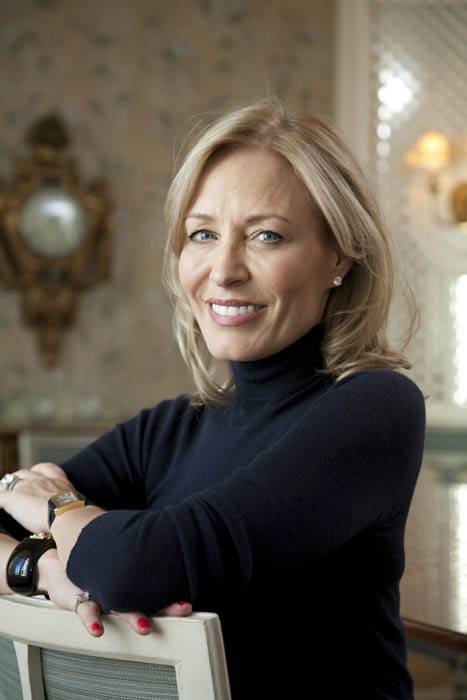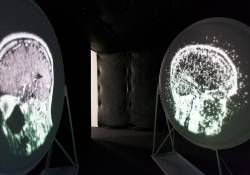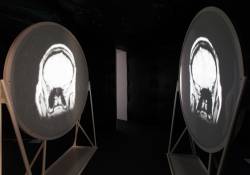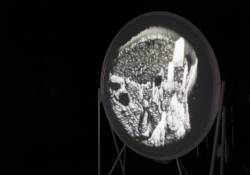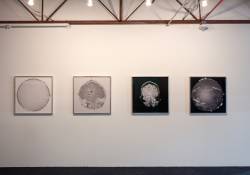Paula Crown Shares Her Journey from Wall Street to the Art World
Paula Crown became a successful artist very recently. She served as Vice President of real estate finance at Salomon Brothers in New York and worked for a family-owned investment firm in Chicago. In 2012, she opted for a new artistic career and received her MFA in painting and drawing from the School of the Art Institute of Chicago. Crown was previously appointed to President Obama’s Committee on the Arts and the Humanities and also served a member of the board of trustees of the Museum of Modern Art in New York. She currently heads the museum’s education committee.
What made you decide to become an artist?
I am not sure one ever has a choice to become an artist. I asked my parents what I did before I was aware that anyone was looking…and I was always making and creating. They brought me to an adult studio at the age of 8 or 9 where I learned to paint with oils. Although my journey was indirect over the decades, it became clear to me that art was something I had to pursue full time in the last 10-15 years. I organized my life in a way to orchestrate that shift. As my four children grew older, I assembled a portfolio, took art classes at the School of the Art Institute and Anderson Ranch in Colorado with established artists and applied to art school. I reduced my for-profit work and community volunteer activities unless they had a direct relationship to my art (for example MoMA and the Presidential Committee for Arts and Humanities).
The road became clearer as to how I was going to find my way to a full time practice. I was accepted into the MFA program at SAIC in painting and drawing and graduated in 2012 and opened a studio the following year. Fortunately, my work has had a positive reception and I have been able to show my work at the Aspen Institute, Chicago Expo, and currently at the Dallas Contemporary Museum. More will be announced for 2014 and 2015.
What is your background?
I received a BA degree from Duke magna cum laude in management science where I did a concentration in Italian renaissance art with the Titian scholar Rona Goffen. In 2012, I received my MFA from the School of the Art Institute of Chicago in painting and drawing.
What is your favorite medium and why?
I have a mind that is associative… I rarely see an idea in one medium or another. I think of myself as a trans-media artist for that reason. Often ideas can start with a pencil sketch that can translate into a 3D sculpture via scanning, and manipulation of that image in multiple planes. I might then animate the sketch and add audio or invert the coloration. I definitely feel more comfortable with tools of the trade that give me the satisfaction of direct mark making (i.e. brushes, markers, pencils) but I also love the image mediating power of Photoshop, processing and high resolution scanning. I paint primarily with acrylics due to allergies now.
Which artists you admire? How have they impacted your work?
It is old news but still true… the vision of Leonardo [da Vinci] to meld art and science is a continual inspiration. His understanding of perception, vision, scale and the juxtaposition of lights and darks still influence my compositional thinking. “Inside My Head,” which is currently at the Dallas Contemporary, references Leonardo’s Vitruvian man in terms of human proportions.
I love Joan Mitchell for her revelations of color and form in chaotic fields of space… Sigmar Polke and Martin Kippenberger for their breadth and challenges to art creation… Willem de Kooning for his body kinesthetic and luscious use of materials… and Agnes Martin for her meditative focus.
What should be the role of artists in the market?
Artists should advocate for their own work and absolutely remain true to their own voice.
Should they be their own art dealer?
Art dealing is a field that requires particular talents and skills. It is difficult to make art all day and then deal and negotiate the sales of ones own work. It requires a shift in ones mind set at the very least. I am saying this from the perspective of someone who has worked in both the business world and is now working as an artist. One must weigh the balance between what the dealer is providing and what the artist needs.
What do you try to express through your art?
Presence. Being in the moment. The power of observation. That is the privilege of being an artist. I have the ability to communicate and share astonishing moments with viewers. We can have a connection about an emotion, or image that goes beyond words. It just is. I look for those moments that I believe are worthy of having conversations about on some level that are of profound interest to me. They can be sublime or just strange or amusing.
How would you describe it?
There is an element of discovery in my work… when people learn that a sculpture is a topology of a torn edge of a piece of notebook paper, or that something that looks printed is really painted, or that a form that looks like a planet is really an MRI of my brain that was altered into a spherical shape. There is a playfulness that hopefully engages the viewer.
What advice would you give to a young artist?
Read (or listen to the CD) of “Letter’s to a Young Artist” by Anna Deveare Smith. It is so wise and true about what it takes to be an artist. There are no secrets. It is about passion, focus and all the things we know and don’t want to hear about building an art career. It takes a tremendous amount of hard work and discipline. Chuck Close spoke about how artists needed to be their own “foundations” to support their art practice. In other words, they had to have some other means of income at least in the early years. I worked on Wall Street to pay my rent. You need to do what you need to do, but always keep your star, your desire, in sight.
Photos: Courtesy of Paula Crown & Kevin Todora courtesy of Dallas Contemporary

